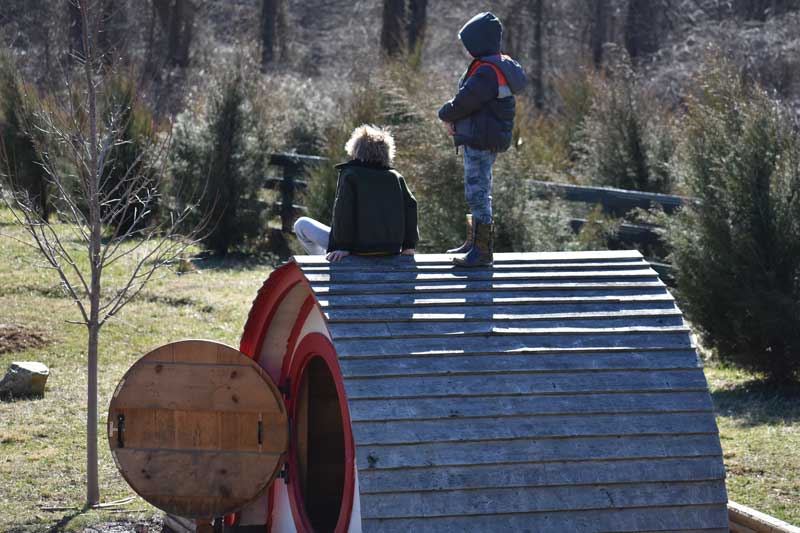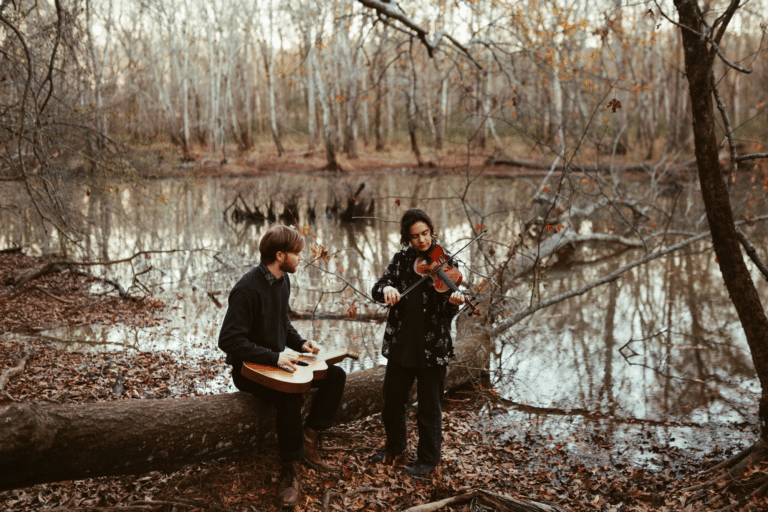Click here to read the whole article

Photo credit: Sarah Vogel
Any good doctor, veterinarian, or mechanic understands that wellness isn’t just about fixing what’s already broken. Maintenance and preventative care are vital, if not the most important components of a healthy lifestyle.
My truck often gives me grief — unsurprising, considering its age and the odometer reading. Several months ago, I noticed my engine would shudder at low speeds, followed by a clunky cylinder misfire. Without the money to afford a repair, I hoped it would somehow magically straighten itself out, which cost me a new distributor cap, ignition module, rotor, spark plugs, and spark plug wires. The only thing that needed replacement in the first place were the spark plugs. But due to my willful ignorance, I paid four times the price for what should have been an easy fix.
It’s not necessary to wait until catastrophic failure before taking action. Take it from me and my old Chevy — that strategy is more expensive and harder to fix. An apple a day keeps the doctor away. But it’s easy to forget that what applies to your car and your physical health also applies to mental health, especially when there isn’t a clear answer to the question: What is the psychological apple-a-day?
Until only the last few decades, psychologists have been more interested in mental dysfunction than on what promotes flourishing and happiness. The DSM, often referred to as ‘the bible of psychiatry,’ stands for the Diagnostic and Statistical Manual of Mental Disorders. Notice there is no secondary manual for mental wellbeing.
In 1998, psychologist Martin Seligman gave an inaugural address to the American Psychological Association, concerned about the ten-fold increase in depression diagnoses since the 1950s. Damage-control and treatment are important, he argued. But to improve the mental wellbeing of an entire nation, psychological professionals would need to start addressing problems before they became one.
Seligman wanted to shift focus from the failures of the human psyche instead to its triumphs. In spite of adversity, the human-animal has proven time and time again it can still thrive. Now he wanted to know how and why, thus beginning the scientific field of “positive psychology,” the study of what makes for a good life. And isn’t that what it’s really all about?
Said Seligman, “It is my belief that no medication or technique of therapy holds as much promise for serving as a buffer against mental illness as does human strength.”
Not Prozac, not Adderall, not Cognitive Behavioral Therapy. Human strength. How do we find that strength? Perhaps we need to take a closer look at what it means to be human. “If it ain’t broke, don’t fix it,” they say. In the case of the human psyche, I’m with Seligman. I say we can do better.
Making Jack a Dull Boy

If we want to get serious about the mental wellbeing of our country, it starts with children.
In the heart of the Blue Ridge mountains, spring is full of new life. Winding, backcountry roads give a glimpse of calves and foals frolicking in the morning dew, unsteady kittens stalking leaves in the wind, baby foxes tussling with their siblings. They play.
Play perplexes scientists. Since it serves no utilitarian purpose at the expense of depleted energy and potentially fatal danger, it does make one wonder where the evolutionary benefit lies. For a long time, scientists believed that play prepares young animals for adulthood — predators practice giving chase, prey practice being chased. But this explanation doesn’t always pan out.
There are some other theories. Play might help animals develop cognitive, motor, and social skills and greater understanding of abilities and limitations. Perhaps play helps animals learn to deal with stressful and new situations in their environments. Different animals play differently (even animals like crocodiles, turtles, and wasps) and it’s possible these are different means to different ends. No one really knows for sure.
But do animals need it? And specifically, do humans need it?
It’s hard to ethically study the neurological impacts of play since cutting into children’s brains is considered a little taboo. Much of the research is conducted on animals, often on rats. But since we are also animals (and like rats, a social, vertebrate species), scientists hope their findings can point us at least in the right direction.
Neuropsychologist Jaak Panksepp was interested in whether or not play was a primitive process, like the drives for food, sleep, and sex — “memories evolution built into the brain.” These drives reside deep within the ancient, inner brain, while the newly evolved outer cortex controls learned activity (e.g. stop on red, go on green). To study this further, Panksepp surgically removed the outer cortex of young rats and compared their behavior to that of normally developed rats. Both groups still tussled and played.
What does this mean? Well, for one, it means that the impulse for play is deeply ingrained, like our other primal instincts. Furthermore, scientists like Panksepp believe this finding indicates that play, though seemingly pointless, may actually be key to animal survival and evolution. So what benefits does play provide?
One study found that rats raised in a sterile, boring, isolated environment grew up very differently from rats raised with an interesting environment full of toys and other play companions. “Enriched” rats not only were more successful in attracting mates, they also developed larger cerebral cortices and larger brains. Further studies found that these rats were smarter, better able to complete mazes, and showed increased levels of brain-derived neurotrophic factor, a protein necessary for the growth and maintenance of brain cells in both animals and humans.

When looking at humans, I think parents intuitively understand that play is good for children — at the very least, it tuckers them out enough to get a little peace and quiet from time to time. And while important in a world of increasing obesity, the benefits of play go beyond physical exercise. In children, scientists have determined positive effects of play on attention, creative problem solving, academic achievement, emotional regulation, empathy, reasoning, and language.
The problem is that play is dying.
Play has been declining steadily since the 1950s, a time that psychologist Peter Gray calls the “Golden Age” of play. With child labor laws in effect, children couldn’t work in the mines or the factory, and were left instead to their own devices and imaginations to fill the time. After school, neighborhoods were full of children roaming around on bicycles, climbing trees in the backyard, or catching tadpoles in the pond. But free time has dwindled, yards have signs that say “keep off the grass,” and latchkey kids are picked up by police.
More than once I’ve heard a parent say, “I can’t let my child play outside. Things aren’t like they used to be.” And you know what? They’re right. Children are safer now than ever — the mortality rate is lower, fewer children go missing, abduction rates are lower, kids aren’t getting hit by cars. Still, parents are petrified, and I don’t blame them. Who wouldn’t be in a world with toxic tap water, baby-eating dingos, school shootings, microplastics in the table salt, and Amber alerts on push notification?
The world is a scary place, news anchors tell us — because scary sells. I interned one summer for the local Fox station in Philly (please forgive me for my sins), where I spent hours calling dozens of hospitals during a heat wave to find someone who had died of heat stroke. Hurrah, cheered the news room when I finally found one. We were the first to report on this horrible “epidemic.” The news cycle is shorter than ever with clips cut to the most inflammatory nine-second sound bite possible. Because that’s as much attention the average viewer has to spare. Nuance can’t exist in nine seconds. Only fear, death, and violence splashed in bold, bright red.
Aside from abductions, accidents, and murder, parents have also begun to fear something perhaps more insidious — failure. In such an uncertain and scary world, it makes sense that parents want to shield their children from suffering. But at what cost?
In 1983, the Department of Education released a report “A Nation at Risk,” lamenting a “rising tide of mediocrity” in American children. “If an unfriendly foreign power had attempted to impose on America the mediocre educational performance that exists today, we might well have viewed it as an act of war,” read the dramatic report. The same attitude led us to No Child Left Behind in 2002, shifting focus of education entirely to standardized test scores. The message received by educators, schoolchildren, and parents was that one thing mattered: producing results.
Today, many kids are enrolled in SAT-prep classes by middle school, pack their schedules full of AP classes, and choose their hobbies based on padding their resumés for college admissions rather than on things they enjoy. We expect a lot from kids: wake up before the sun, sit still and pay attention, get to seven classes with less than five minutes between bells, participate in an organized sport or work a job, go home and study, rinse and repeat.
And we never stopped to ask in what universe a child might need a resumé. Where does that leave us? With kids who are overworked, stressed, sleep-deprived, and more anxious and depressed than ever.
No Child Left Inside

What is play exactly, and how do we get it back?
Play is, simply put, what we choose to do when we don’t need to, just because it’s fun. If we do something to reach an extrinsic goal, it’s probably not play. So for all the parents with their kids enrolled in after school soccer or chess club, that isn’t play. Directed activity with structure, rules, and rankings isn’t play. Play comes from freedom of choice.
In my research for this article, I reached out to ecotherapist Carolyn Schuyler, founder of Wildrock, a non-profit, natural playscape nestled in the foothills of the Blue Ridge Mountains in Crozet, Virginia. Wildrock features mountain views, a wading stream, a walking labyrinth, educational center, and more. Though Wildrock is accessible to people of all ages, children are the most common visitors.
Visiting Wildrock on a field trip day is something to see. Kids are allowed to choose whatever they want to do, whether it’s splashing in the creek, building forts out of sticks, playing “wildlife rescue,” dressing up in costumes, climbing a giant wooden salamander, hiding in the Hobbit House, crawling through tunnels, or digging in sand. There is no limit to the games they invent.
With my previous job working with at-risk youth, most of my kids were diagnosed with ADHD. Many of them would get in trouble regularly at school for outbursts, leaving class, or failing to complete an assigned task. Even when given the opportunity to play, those children still managed to get in trouble after flitting from one toy to the next, quickly bored by the limitations of their gadgets. At Wildrock, I saw children with an infinite number of possible games, but most of them stuck to one activity for their entire visit. They were lost in the world of their imaginations, building castles and being superheroes. Why was a natural playscape so engaging?

Photo credit: Sarah Vogel
“Playing in nature is so organic and human. That’s how people throughout history have connected, and how people begin their relationship with the world. Through playful exploration,” explained Schuyler. “Nature gives us all these materials and incredible resources to express ourselves, whether it’s a beautiful space that makes you want to dance, or dried leaves you want to pick up to make something with. Everywhere in nature there are invitations to express ourselves, and I think that’s hardwired. That’s been going on since ancient man.”
Play doesn’t need to be outdoors, but it certainly seems to help. Perhaps because indoor activities are limited, especially with toys designed not for child development, but to create greater market demand. Chintzy plastic characters from the latest hit movie and robotic dogs have no personal significance and leave little to the imagination. Parents with the best intentions might try to keep their children safe indoors, and entertain them with educational games or television programs. But when you put blinders on play, restricting it to narrow boundaries, inevitably you hit a ceiling. Nature, on the other hand, is limitless.
Schuyler sees the disconnection most people have from nature and the anxieties internalized in a frightening world. Even the bus ride to Wildrock is ecotherapy, she says. “There are adults from the city who don’t know what a mountain stream looks like. Some kids have never seen a cow, and I even had a child ask me if the grass was real.”
When she told me this, it lined up with my previous research about our increasing time spent in front of screens, living our lives indoors, and forgetting our connection to the earth. Truth be told, much of my research left me depressed and anxious about the future. But Schuyler reminded me that fear solves nothing.

Photo credit: Sarah Vogel
Wildrock was founded in the hopes of providing a bridge into nature for people who either haven’t had the opportunity of nature connection in their youth, or live such fast-paced lives that they’ve lost touch. But she focuses on children in the hopes of shaping the adults of tomorrow. “All of us ecotherapists are conservationists, even though that’s not in the tagline. You allow people to be curious about nature, and with curiosity comes caring, and with caring comes conservation. You go from ‘What is this?’ to caring about it and wanting to protect it.”
It’s easy to lament how the world has changed and wish for a return to simpler times. But, as Schuyler gently pointed out, we can’t. “I don’t think there’s any going back. Yes, there are dangers about what urbanization and technology can do to the brain. Yes, there is an environmental crisis and we don’t want people to ignore that. But fear creates a bigger disconnection from nature. Scaring people doesn’t help make better stewards of the future. It’s falling in love with nature that does that.”
Falling in Love
In a world run by advertisers and media, we are bombarded with messages every day that our lives are not enough — we need this product, we need to lose weight, we need a college degree, we need this car, we need a respectable career. The world is constantly telling us what we need.
But when we exercise to impress others, study to achieve a better letter grade, post on social media for the likes, and work for dollar signs, we prioritize outcome. The problem is that outcome is often out of our control. And even if we do reach that outcome, there is always something more to want.
Going back to positive psychology, research shows that goals based on external rewards (like money, fame, appearance, prestige, or power over others) lead to lower levels of happiness. In studies conducted by psychologist Edward Deci he found that “having an unusually strong aspiration for material success was associated with narcissism, anxiety, depression, and poorer social functioning.” Obviously, that’s not to say that money and material things don’t matter. We have to eat, after all. But if your motivations are founded on the desire to get rich, well… in the immortal words of the Notorious B.I.G., “mo’ money, mo’ problems.”
Intrinsic goals, on the other hand, give us autonomy and a sense of control. When we exercise to feel stronger, study to become more competent, post on social media to share joy, and act on the love of what we do, we embrace rather than fear failure. We learn and we grow, because the outcome doesn’t really matter. We prioritize the process. And the process tells us more about our authentic desires than anything anyone tells us we need.
Hypocritical though it may seem with me sitting here telling you that we need nature, we need to get our children back outside, and we need ecotherapy, I ask that you bear with me. Nature is everywhere. We all have a relationship to nature, no matter how removed it may seem. If you have a pet, if you grow houseplants, if you go fishing or hunting, if you listen to nature sounds on Spotify to fall asleep — that relationship already exists. I’m just asking for you to remember, in whatever form that takes for you. And to fall in love again.
“It’s reassuring to know that memory never goes away and you can always rekindle a relationship with nature. It’s like seeing an old friend — it could be ten years and it feels like nothing has changed,” said Schuyler. “Everyone’s got something, even if it’s just looking at the moon, or looking at snowflakes out the window of your apartment in New York City. Something that makes you go, ‘Wow.’”
A relationship with nature doesn’t need to be complex. You don’t need to hike the Appalachian Trail, be a master naturalist, or live off the land. My earliest memories of being in nature involved digging holes with a stick in the backyard. Ostensibly I was digging to China, but still, it was simple. Getting dirt under my fingernails, uncovering wiggly worms and beetles, picking up bits of quartz and pretending they were diamonds.
Connecting to nature meets a basic human need for play in both children and adults alike. And one reason it is so important is that play, by definition, is self-motivated. If it weren’t something we liked to do just for the sake of it, it wouldn’t be play. Like children, adults don’t need to go outside in order to play. But in nature, play seems almost inevitable. When I stand at the edge of the river, I skip rocks just to see how many jumps I can make. When I sit in the yard, I find myself absentmindedly braiding grass or linking daisy chains.
Nature doesn’t tell us what to do or who to be, it just waits for us to participate.
When I asked Schuyler for practical advice to people who want their own taste of ecotherapy at home, she suggested writing a park prescription. “How much do you need to be in nature to feel well? You might probably already know. And at what point are you not getting enough? You probably already know. What kind of nature do you need to feel your best self? Do you need to be in the woods, or at the beach, or near water? You already know these things because you have already been connected to nature your whole life.”
Schuyler’s own park prescription is to sit on a moss-covered hill in her backyard a few times a week. “I think it’s important to de-mystify this because, in a way, it is really simple,” she said. “The only reason there is a name for ecotherapy is that we’ve forgotten the simple things that matter.”
Remembering that childlike sense of wonder feeds something that many of us have neglected. Perhaps because play seems frivolous, and perhaps because it seems like there aren’t enough hours in the day. But if we spend every waking moment doing things we think we should do, we never learn what we want to do. And if we don’t know what we want to do, we can’t learn who we are.
Nature taps into a different way of knowing, a way that isn’t intellectual, perhaps in a way that can’t be verbalized. Build a bonfire and tell me it doesn’t feel like an accomplishment. Catch a fish and tell me it isn’t an adrenaline rush. Watch a sunset and tell me it isn’t beautiful. Or don’t. Only you know what makes your heart sing, but nature can help you figure it out.







